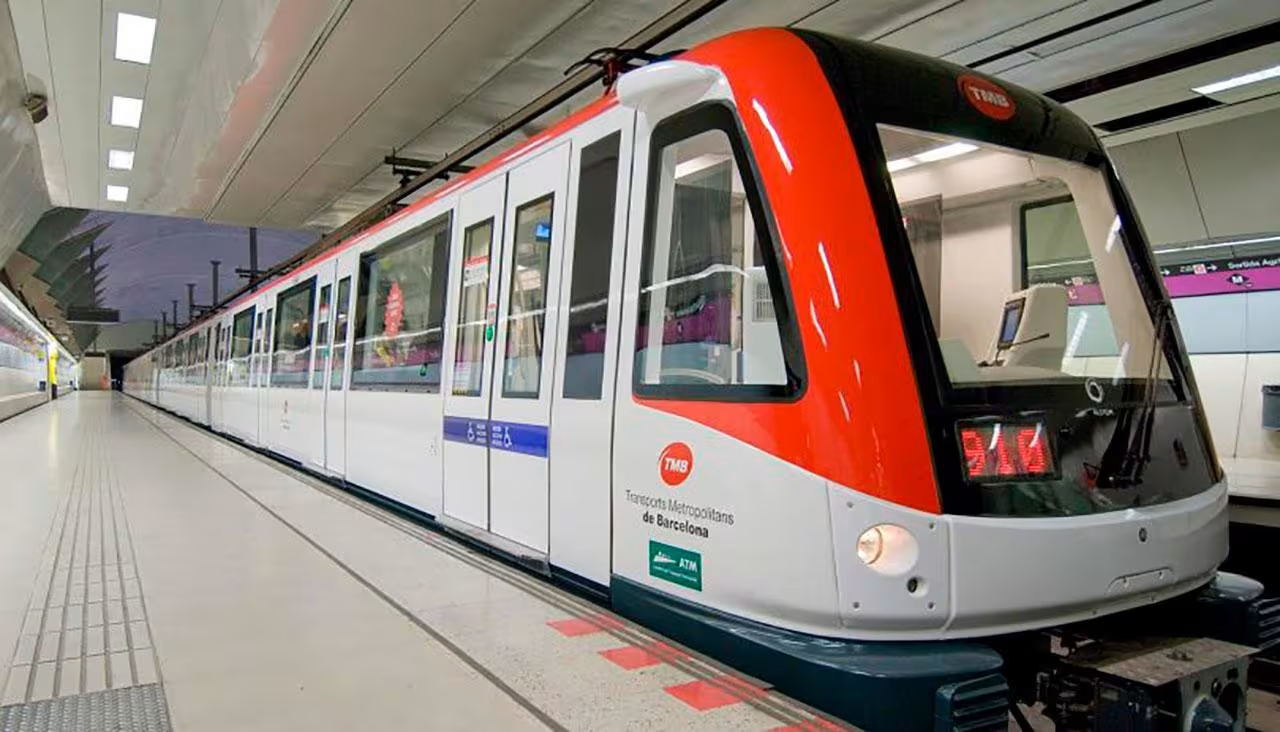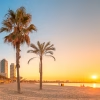Why It’s Easy to Move Around in Barcelona
Barcelona is a city designed for exploration. Thanks to its compact layout and walkable streets, moving around feels natural, even for first-time visitors. The public transportation system is well integrated, affordable, and user-friendly. Whether you prefer traveling quickly by metro or enjoying scenic rides by bike, Barcelona offers mobility options for every type of traveler. From budget-conscious backpackers to digital nomads in town for a while, the city accommodates all styles.
The network of metro, buses, trams, trains, and bike lanes connects almost every corner of the urban area. Even the airport is seamlessly linked to the center. Many travelers discover that mixing public transit with walking is the most efficient way to explore the city’s cultural and architectural gems. And for those seeking eco-friendly alternatives, electric scooters and bikes are increasingly accessible. Barcelona truly makes it easy to get around without a car, offering freedom, flexibility, and affordability.
Metro System: The Fastest Way to Cross the City
Barcelona’s metro system is arguably the most convenient way to travel long distances across the city. With 12 lines (L1 to L11 and L9 Sud/Nord) covering both tourist hubs and local neighborhoods, it allows you to reach places like Sagrada Família, Camp Nou, and Park Güell with ease. Trains are clean, frequent, and air-conditioned.
Tickets come in various formats. T-Casual (10 rides), T-Familiar (8 rides shared), and Hola Barcelona cards (unlimited rides for 2–5 days) offer different levels of value. Machines accept cash and cards, and signage is available in English. Most stations are wheelchair accessible, but not all. It’s best to check the TMB website or app for real-time accessibility info.
Metro operates from 5:00 AM to midnight (Sun–Thu), until 2:00 AM on Fridays, and runs all night on Saturdays, making it a reliable option. During rush hour, expect crowded trains, especially on lines L1 and L3. For airport access, Line L9 Sud connects both terminals with various parts of the city, although it requires a separate ticket.
Buses and Night Buses (NitBus)
While the metro is fast, buses can be more scenic and better suited for short distances or direct routes not served by trains. Over 100 bus lines cover the city, and they use the same tickets as the metro. Buses are air-conditioned and usually on time, with real-time info at most stops.
Barcelona also offers a reliable night bus service (NitBus). Operating from around 10:30 PM to 5:00 AM, it’s ideal if you stay out late. Most night buses depart from Plaça Catalunya and reach the city’s main neighborhoods. The TMB app and Google Maps help plan routes in seconds.
All buses have reserved areas for wheelchairs and strollers. However, delays may occur due to traffic, especially during festivals or strikes. Still, buses offer a comfortable and budget-friendly way to move around the city — and they let you enjoy the views while in transit.
Trams, FGC, and Renfe for Suburban Travel
If your plans include exploring beyond central Barcelona, the tram, FGC (Ferrocarrils de la Generalitat), and Renfe services are key. Trams run mostly in the northern and western parts of the city, connecting neighborhoods and commercial areas that metro lines don’t reach.
FGC and Renfe operate suburban trains that can take you to places like Montserrat, Sitges, and the outskirts of Catalonia. Ticket zones apply, and a T-Casual or Hola Barcelona card won’t cover all trips, especially those leaving Zone 1. It’s crucial to check your destination’s fare zone to avoid fines.
These regional trains are usually punctual, clean, and offer a calm alternative to busy city lines. They’re also popular with commuters, so avoid peak hours for a more relaxed journey. Day trips by train are one of the best ways to discover hidden gems around Barcelona.
Biking Around Barcelona
Barcelona is one of Europe’s most bike-friendly cities. With over 200 km of bike lanes, flat terrain, and beautiful coastlines, it invites locals and tourists alike to pedal around. While the public system Bicing is for residents only, visitors can rent bikes from platforms like Donkey Republic, Scoot, or local bike shops.
Cycling is especially pleasant along the beachfront or in green zones like Parc de la Ciutadella. Electric bikes make it easy to ride uphill toward Montjuïc or Park Güell. Always follow traffic rules and wear a helmet, even if not mandatory, as local police sometimes fine for violations.
Some bike rental companies also offer guided bike tours, an excellent way to explore the city safely while learning about its history and landmarks. Biking is a sustainable and exhilarating way to connect with Barcelona’s vibe — especially on a sunny day.
Walking in the Historic Districts
Barcelona’s Gothic Quarter, El Born, and Gràcia are best explored on foot. These neighborhoods are filled with narrow alleys, hidden plazas, street art, and tapas bars. Walking allows you to experience the charm and detail of each street corner.
Las Ramblas is the most famous walking street, but it’s often overcrowded. For a more relaxed experience, head to Passeig de Gràcia, home to Gaudí’s architecture and boutique stores. Wear comfortable shoes, stay hydrated in summer, and bring sunscreen, as some areas offer little shade.
Walking is also great for spontaneous discovery. You may stumble upon a flamenco show, a vintage market, or an artisan café. Barcelona was made for wandering, and the best stories often begin with an unplanned turn down a side street.
Taxis and Ridesharing Apps
Taxis in Barcelona are black and yellow and can be hailed on the street or booked via apps. They are reliable, metered, and regulated by the city. Credit cards are accepted, but always confirm before entering. Taxis are ideal for late-night returns, airport rides, or when carrying luggage.
Ridesharing apps like Free Now, Uber, and Bolt are available, though Uber only operates with licensed drivers. Pricing varies depending on the time and demand. Apps often show cheaper rides, but taxis tend to be more dependable, especially during peak hours or rain.
You don’t need to tip drivers in Spain, although rounding up is appreciated. If you’re traveling in a group or with family, a taxi or ride-hailing app can often be cheaper and more comfortable than public transport.
Getting From and To the Airport
Barcelona–El Prat Airport (BCN) is about 14 km from the city center and well connected. Your best options include:
- Aerobus: €6.75 one way, departs every 5–10 minutes from both terminals to Plaça Catalunya. Fast, with space for luggage.
- Metro L9 Sud: Slower and requires a separate airport ticket (€5.15), but good for connections to other metro lines.
- Train (R2 Nord): Runs from Terminal 2 to the center (Passeig de Gràcia, Estació Sants), but not all flights use T2.
- Taxi or private shuttle: Around €30–€35 to central Barcelona. Best for convenience and heavy bags.
Choosing depends on budget and comfort. Solo travelers often prefer Aerobus, while groups benefit from splitting the cost of a taxi.
Money-Saving Tips and Travel Cards
For frequent travel, consider a Hola Barcelona Card, which offers unlimited rides for 48, 72, 96, or 120 hours. It covers metro, bus, tram, and some trains within Zone 1. The T-Casual (10 single rides) is great for short trips, while T-Familiar allows sharing rides among several people.
You can buy tickets at airport kiosks, metro stations, or online, and some cards offer discounts for museums or attractions. Tourist passes are ideal for convenience, but local tickets may offer better flexibility and savings, especially for longer stays.
Final Advice for First-Time Visitors
The best way to explore Barcelona is by mixing metro and walking. This lets you move fast between districts while still enjoying the city’s charm on foot. Don’t forget to validate your ticket and check the fare zone before boarding a train or tram.
Travel light, wear comfortable clothes, and always carry water during summer. Use digital maps but allow room for spontaneity. With smart planning and an open mindset, getting around Barcelona can be as enjoyable as the destination itself.
Frequently Asked Questions
The best combination is using the metro for long distances and walking to explore historic neighborhoods like the Gothic Quarter or El Born. It’s efficient, affordable, and allows you to see more of the city at your own pace.
Yes, Barcelona’s public transport is generally safe, clean, and reliable. However, be cautious of pickpockets in crowded metro stations or tourist areas. Always keep valuables secure and in sight.
Yes, you can. T-Casual, T-Familiar, and Hola Barcelona cards work across metro, buses, trams, and even some local trains within Zone 1. Just validate your ticket each time you board a new vehicle.
The R2 Nord train or metro L9 Sud are budget-friendly options (around €5), but the Aerobus is more convenient and faster, especially if you’re carrying luggage. Taxis are best for door-to-door comfort.
Yes. Trips outside Zone 1, like Montserrat (FGC + cable car) or Sitges (Renfe train), require separate tickets, not covered by standard metro cards. Check the fare zone and platform signage before boarding.
Yes, Uber, Bolt, and Cabify all operate in Barcelona, offering convenient alternatives to traditional taxis. You can easily book rides through their apps, which provide options for quick pickups and cashless payments, making getting around the city simple and efficient.
More guides about Barcelona
🏘️ neighborhoods: where to stay & explore
🏃♂️ outdoor sports: run, hike, work out
🌊 water sports: surf, sup & kayak
🛍️ shopping: markets, boutiques & vintage
🎨 art & culture: museums & street art
🌇 sunset spots: rooftops & views
🍤 what to eat: tapas, dishes & markets
💻 digital nomads: cafés & co-working
🗺️ one day itinerary: barcelona in 24h
🎁 free things to do on a budget
🍸 nightlife: bars, clubs & local picks
🚇 getting around: metro, buses & bikes
🏕️ camping: top nature escapes near city
🏖️ hidden beaches: 9 secret coastal spots

